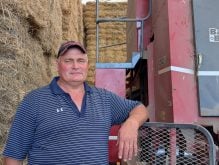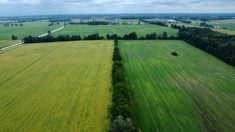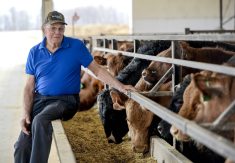It isn’t easy to get and hold the attention of a government as it juggles with full plates and a side of political instability.
Why it matters: 2024 was a busy year for the Canadian Federation of Agriculture, and 2025 is shaping up to be the same.
“We just have to make sure agriculture is right in the centre of that plate, and that’s the government’s primary focus, because it’s one of, if not the biggest, economic driver and employer in the country,” said Keith Currie, president of the Canadian Federation of Agriculture in an interview during the Ontario Federation of Agriculture annual meeting in Toronto Nov. 27.
Read Also

How to work with the men in white hats
It’s obvious at times that these policies, while often created with good intentions, were drafted by those with little or no experience in the agriculture industry.
Currie said the CFA is building strong and profitable relationships to advance the agriculture sector provincially, nationally and internationally. This includes meeting with G7 farm leaders and being a member of the Cairns Group, a coalition of 20 agriculture fair-trading countries.
“We think that’s a very powerful voice and we’re watching what’s going on with current legislation.”
Most pressing are Bill C-280, which affects fruit and vegetables and is awaiting royal assent; Bill C-275, which targets on-farm food safety and biosecurity; and Bill C-293, the Pandemic Prevention and Preparedness Act.
Currie acknowledges the latter bill is substantial for pandemic preparedness but contains wording detrimental to livestock agriculture.
“We want changes to that, and also (it’s) setting up an ad hoc committee to make judgments on things like livestock, which is not good for us either,” he said. “So, we’re looking for those two little sub-sections to be pulled out of, I believe, section four.”
Currie said the federation was busy this autumn preparing a submission due to rumbles about a springtime budget on Parliament Hill.
The budgetary asks remain consistent: increasing the Advance Payment Program interest-free portion, continuing or at least extending the inter-switching pilot project to explore better rail transportation, trade issues and opening new markets.
Election-wise, the CFA keeps each political party abreast of the agriculture sector’s priorities and how they fit into the broader agriculture community, such as international carbon border adjustments to ensure Canadian producers are not disadvantaged.
“How do we make sure our producers are not competitively disadvantaged with either the wrong kind of carbon pricing system or no carbon pricing system?” he said.
“We’ve got to make sure we’re still able to effectively trade and not be negatively affected by carbon border adjustments.”
Regarding President-elect Donald Trump’s threatened 25 per cent tariffs on Canada, Mexico and China, Currie hopes Trump’s policy advisors, particularly agriculture secretary Brooke Rollins, will drive home the negative impact on U.S. consumers.
“Her family comes with a farm background, but more importantly, she’s a very strong policy person,” he said.
He suspects Trump threatened the tariff as a pressure tactic ahead of the Canada-United States-Mexico Agreement (CUSMA) review, scheduled to begin in late 2025 and continue into 2026.
Regardless, Currie said the resolution proposed by former CFA and OFA president Ron Bonnett at OFA’s annual meeting, to develop a list of products imported from the U.S. to prepare for potential retaliatory action, has merit.
“Does that mean food prices are high on both sides of the border? Does it affect trade? We need to be ready and on guard, but I think we need to breathe a little bit until we know more about how this will play out.”
Currie said it’s essential to keep a cool head and weigh what’s in everyone’s best interests.
“It’s a way to unite the farm community across the country to stand together, defend what we’re doing, and make sure, as I said, (to) do no harm through this process.”
To that point, Currie is concerned about recent comments from Ontario Premier Doug Ford and Alberta Premier Danielle Smith about excluding Mexico from CUSMA.
“(CFA) is looking at the bigger picture of what the CUSMA deal means for North America and free trade in general. We’re an international trading country,” he said. “I’d like to see the provinces be a bit more aligned from an international perspective.”












